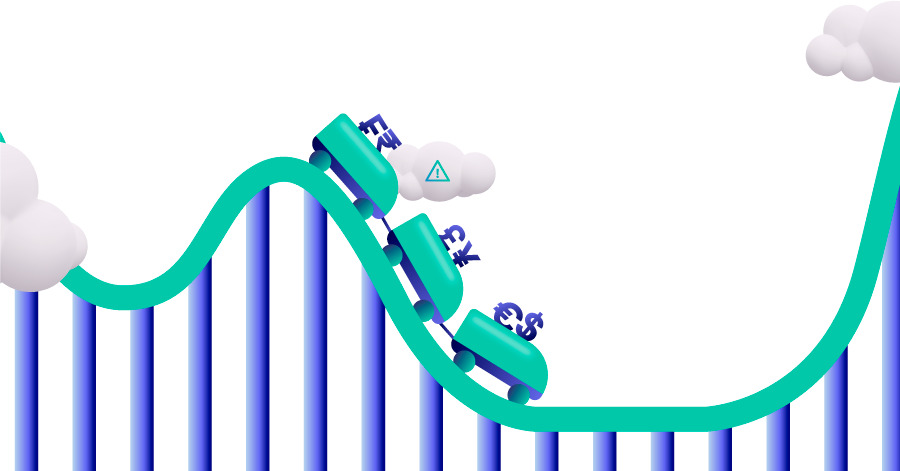One of the growing trends and challenges facing secured finance lenders today is economic turbulence. This includes inflation, rising interest rates, and a pending recession.
It may surprise some people that modest inflation is seen as a sign of a healthy economy. Short-term inflation helps lenders because borrowers/customers need more access to funding.
Inflation, of course, leads to an increase in costs such as raw materials, shipping, salaries, and other expenses. All of which leads to the need for more capital funding.
However, long-term inflation increases the risk of loan defaults and decreases consumer and commercial spending – eroding profit margins. And that’s when lenders especially need to focus on risk management, implementing more controls, and exercising more discipline with the ability to respond quickly.
In their Autumn 2022 Statement, the U.K. HM Treasury (the UK government’s economic and finance ministry) recognized that businesses are facing inflationary pressures. They are looking for ways to support long-term economic stability. A recent foundation article from the Equipment Leasing and Finance Foundation (ELFF) says higher inflation and rising interest rates mean new challenges – and opportunities – for the equipment finance industry.
According to the US Bank CFO Insights Report, more than a third of financial professionals identified high inflation as one of their top business risks.
And here are the areas they’re exploring to help address inflation.
- The majority (57%) are identifying opportunities to cut costs, but fewer than four in 10 are conducting any other possible steps to manage inflation risks
- 35% are evaluating the credit risk of major customers
- 32% are evaluating working capital practices
- 32% are evaluating pricing
- 31% are hedging against rising costs of certain commodities and currencies
- 29% evaluating the credit risk of major suppliers
- 22% are evaluating salaries
1/3 of 750 finance professionals name high inflation as a top business risk
Source: 2022 US Bank CFO Insights Report
Managing inflation, high interest rates, and recession with SaaS technology
While higher interest rates can help offset some of the risks, so can the right technology – like SaaS.
While you can’t identify and plan for every risk scenario, accessing real-time data and insights via APIs, reporting, and datastreaming can help you react faster to mitigate risks associated with high inflation, high interest rates, and the recession.
That’s how Solifi helps clients prepare for and manage through economic turbulence. For example, during inflationary times, you need access to your accounting information every day. Not every quarter. Access to your real-time data allows you to see how well your clients are tolerating or reacting to economic disruptions. And gives you the opportunity to respond quicker to help mitigate risks.
See our related post: Top trends for secured finance lenders: Harness data insights
Practical ways secured finance lenders manage risk related to the economy
Here are a couple of practical risk-management recommendations to address an unstable economy.
Higher interest rates
Pricing services can help address higher interest rates – including real-time market data to help automate price increases. Interest rates – in addition to a growing trend among younger generations – are driving borrowers away from traditional lending to leases that require residual value. Future value automation will help here as well.
Supply chain issues
Supply chain issues continue – a risk stemming from the pandemic. And this business disruption is extending its stay. Most companies do not possess full visibility of their supply chain. According to Equifax (one of Solifi’s API technology partners specializing in supply chain risk management), only 6% of companies report full visibility. And supply chain disruptions are costing large U.S. companies $184 million (USD) annually, with 74% of businesses still relying on manual methods.
Additionally, one of the biggest risks with supply chain disruption is the residual value swing – prices go up when the supply chain fails because new equipment is not available. And prices go back down when production meets demand.
With the right technology, you gain greater visibility into your supply chain and mitigate risks proactively.
Should lenders invest in technology during a recession?
Yes. In fact, in one of our recent surveys, 42% of secured finance lenders said even with the threat of a recession, they will still invest in new technology. That’s because they know new technology is critical to their future success.
42% of secured finance lenders will invest in technology during a recession
Added bonus: SaaS is recession-proof. Or at least recession-resistant. With Solifi’s software-as-a-service Open Finance Platform, you only pay for what you use – and with a set price, you can avoid fluctuating fees and operating costs. Regardless of the precarious economy.
Additionally, the self-service portals mean less headcount or the ability to reassign employees to areas of the company that bring more value and money into the company.
An unstable economy is not a time to wait and see what happens. One way to navigate risk and uncertainty is to deploy a SaaS platform to continue to grow through business disruption.
How to manage risk with SaaS technology
Read part 1: Managing risk: The best strategies use SaaS technology
Read part 2: Managing risk: Navigating economic turbulence with SaaS
Read part 3: Managing risk: The best tech to mitigate business disruption
Read part 4: Managing risk: How to use tech to mitigate non-compliance
Read part 5: Managing risk: Protect from cybersecurity threats with SaaS
Read part 6: Managing risk: Using tech to fix the labor shortages
